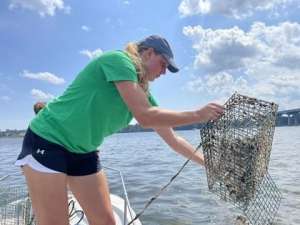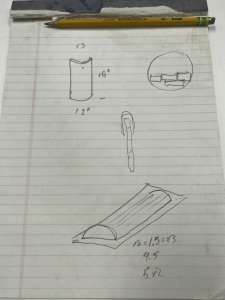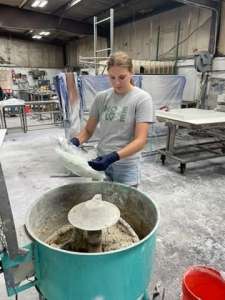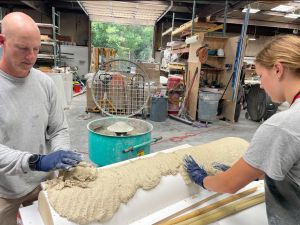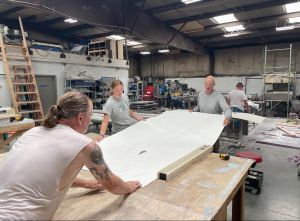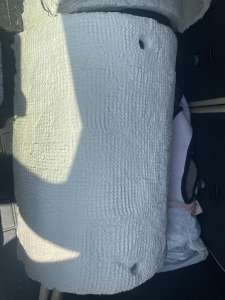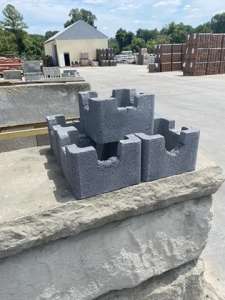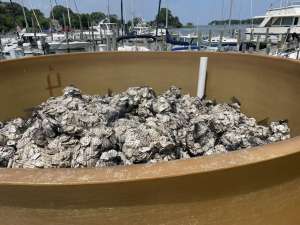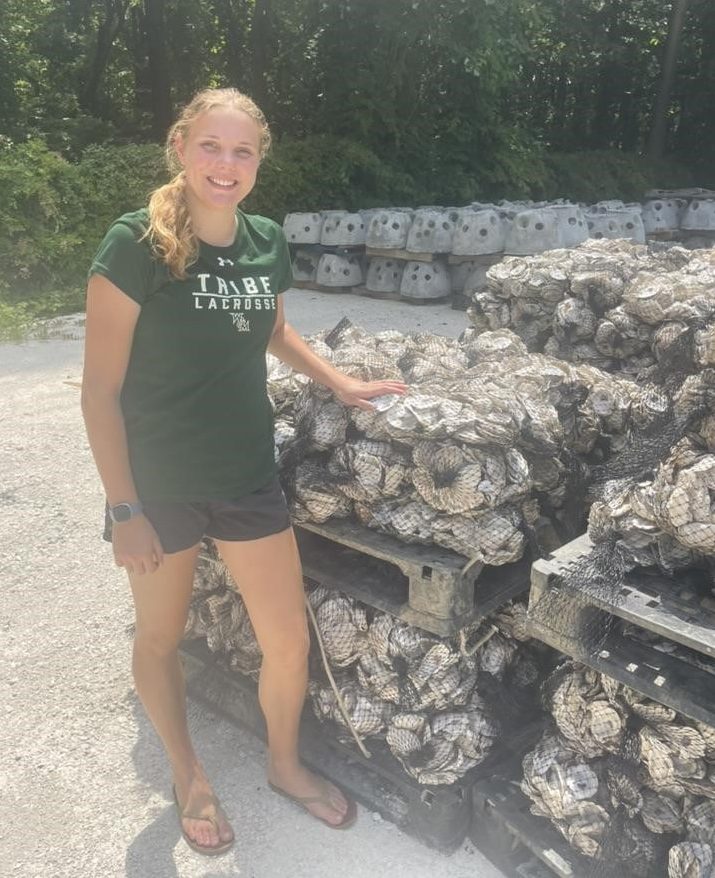Olivia ’25 is spending her summer working with the Chesapeake Bay Foundation in order to test out different solutions to increase the number of Oysters in the bay.
Currently there are around 4.5 billion oysters in the Chesapeake Bay. The Chesapeake Oyster Alliance and the Chesapeake Bay Foundation are trying to bring that number up to 10 billion oysters by 2025. A single oyster can filter 50 gallons of water per day. However, their numbers have been significantly reduced in the past few decades and the Bay has only become more polluted since. Oysters are an essential part of the Bay’s ecosystem, but there is a problem. They can only grow on top of other oyster shells or some hard surfaces. This means that their habitat is limited and many oyster spat often do not find a place to plant themselves before they ultimately die, suffocated by the silt and mud at the bottom of the Bay.
I am working with the Chesapeake Bay Foundation in order to test out different solutions to this problem and increase the number of oysters in the Bay. One of the best solutions is concrete oyster reefs. These are concrete structures that can be seeded with oyster spat and placed in the Bay. My goal is to find the most effective, efficient, low-maintenance concrete structure that is easy to install on the thousands of residential docks in the Chesapeake Bay. I am testing out two different concrete types and three different structures. I will place one of each type of structure in three different locations in the Chesapeake Bay. I will then monitor them to see how the oysters grow on each one.
To start off my project, I worked with a local concrete company called Hyde Concrete. The CEO helped me brainstorm the structure types and measurements. I spent several hours in the workshop with him and other employees learning about concrete and the process of building structures. Together we decided the materials and the best type of concrete to use for my structures. I helped to mix the concrete and lay it on top of frames. In addition to that, every week I have been volunteering and working with the Chesapeake Bay Foundation. I learned how they seed and distribute their concrete oyster balls, as well as how their other oyster programs are working towards the 10 billion oyster goal.
I had some challenges obtaining the oyster castles, which are my control structures. I could not find a company that was willing to sell or give me such a small number of castles, and many of the companies I reached out to did not reply. Eventually, I found Allied Concrete, a concrete company that has been very involved and successful in oyster restoration in Virginia. They were happy to work with me. It was also not easy to secure space in the oyster seeding tanks for my structures. The Chesapeake Bay Foundation had their own oyster balls and oyster shells in the tanks, so I had to reduce the number and different types of structures I wanted to test. Now I am waiting for my concrete structures to be seeded so I can place them in the Bay and start my research.
In the long term, I hope to distribute the effective structure to residents living on the waterfront all across the Chesapeake Bay. That way the community can play an active part in oyster restoration by providing more possible habitats for oysters and starting more oyster reefs across the Bay.

